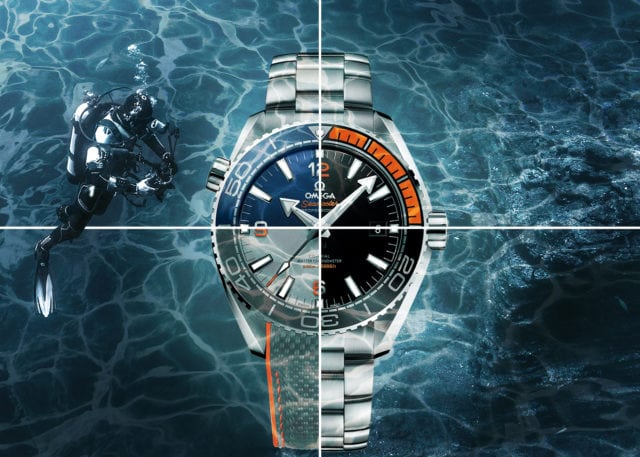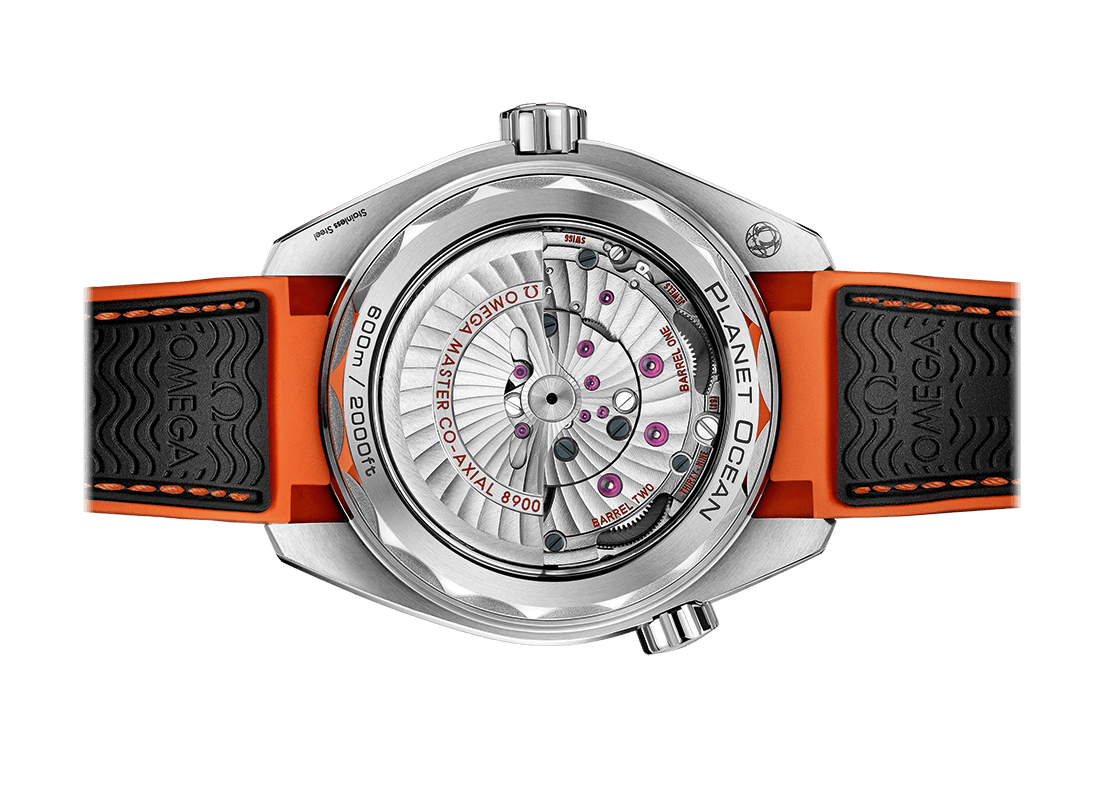
Omega Seamaster Planet Ocean Third Generation + METAS
In 2014 Omega announced that they would test their Co-Axial Master Chronometer movements to be not only COSC Chronometer certified, but also the more stringent METAS certified. Thousands upon thousands of words have been dedicated to explaining METAS certification, so I’m just going to very briefly run down what this means as it’s a significant milestone for the brand including every Planet Ocean watch produced in their third generation and after.
COSC certification guarantees a movement’s accuracy between -4 to +6 seconds per day. METAS takes this significantly further, with the movement as well as function of each watch exposed to magnetic fields over 15,000 gauss and required accuracy of between 0 and +5 seconds per day in a series of varying positions and extreme temperatures. Needless to say, METAS certification is far more rigorous than COSC when it comes to accuracy and the peace of mind of not having to worry about everyday magnetism is a huge plus as well.
Fast forward to Baselworld 2016 when Omega made the Planet Ocean line the star of the show. It’s clear by now that the Planet Ocean is characterized by Omega’s relentless dedication to upgrading, improving, and updating the watch with little interest for the idea of a “timeless design.” Eleven years after the debut of the Planet Ocean line, we see the third and latest iteration of the Planet Ocean featuring the new caliber 8900 movement. I was so smitten with this generation of the Planet Ocean that I got myself a ref. 215.32.44.21.01.001, which is the model with the rubberized orange 15-minute section on the bezel on the textured rubber strap.

Planet Ocean Third Generation Design
The design process throughout the life of the Planet Ocean has been one of constant refinement, updating, and experimenting. Once the Liquidmetal process was totally integrated into the watch line, Omega introduced another new method to keep things fresh. By combining Liquidmetal ceramic with vulcanized rubber, Omega achieved an incredibly vibrant orange look that is bright but not shiny. It contrasts incredibly well with the ceramic bezel, and I can speak to that successful aesthetic because I’m looking down at the watch on my wrist as I type.
A lot of people have expressed concern that the rubber could fade over time, but Omega tested it to replicate the effect on the rubber over 10 years and claim that not much changed. I have a feeling that this concern is like that of ceramic cracking or shattering, in that it’s a concern more in theory rather than something that actually frequently goes wrong. I love taking my nail and gently running it over the rubberized section because it is soft like, well, rubber would be but you can tell that it’s also incredibly durable and will hold up well.
While a lot of styles and new variations were introduced in 2016, the three-hand non-GMT third-generation Planet Oceans got some subtle dial changes. New applied Arabic numerals on the dial and a refreshed minute track are about as far as changes to the dial go. Omega introduced a new textured rubber strap designed to look like fabric that is in my opinion, one of, if not the best rubber straps I’ve ever handled.
Planet Ocean Third Generation Case
Omega changed up its cases sizes in 2016, with the three-hand Planet Ocean watches coming in a new 39.5mm case and a 43.5mm case, doing away with the smaller 37.5mm case as well as the larger 45.5mm case (though the chronograph is done in 45.5mm as well as models like the Deep Black and Big Blue, which I will definitely be getting into briefly).
I know a lot of people who find a 40mm case size to be the sweet spot and I was glad to see Omega offer a 39.5mm Planet Ocean. While the 37.5mm is too small to be unisex, this model is absolutely an option for men who just don’t like bigger cases or love the Planet Ocean but have a smaller wrist. I do have to add, however, that the 39.5mm model runs on the caliber 8800 movement which has some differences from the superior caliber 8900.
The single-barrel mainspring used in the caliber 8800 (compared to the dual-barrels used in the caliber 8900) makes for a shorter 55-hour power reserve, albeit only 5-hours less than the caliber 8900. It doesn’t have the jumping hour hand and setting the date is done through the crown which only advances the date forward. In terms of functionality, this is a serious downside. All this being said, the caliber 8800 is still a METAS certified Co-Axial Master Chronometer movement.
The smaller 39.5mm does have an edge over the 43.5mm case when it comes to that one consistent issue that has become almost a signature of the Planet Ocean, and that is of course the thickness of the case. The 39.5mm model is 14.2mm-thick, while the 43.5mm case comes in at a healthy 16.5mm-thick.
Omega did make a change to the bracelet, which now integrates to the case in a way that allows the watch to fit better on the wrist rather than falling past the lugs. The first center link on either lug is shorter, which allows for a better fit on the wrist as well. But the bigger change in bracelet is that the clasp allows adjustment to five positions up to 9.6mm in length. Omega has always lagged behind Rolex when it comes to bracelets and while this is still the case by far, it’s good to see refinement here as well. That being said, I opt for the vastly superior rubber strap here.
Omega Seamaster Planet Ocean + Caliber 8900 Movement
Of course, the addition of the caliber 8900 movement was the biggest upgrade for the 3rd generation Planet Ocean watch. Introduced a year before during Baselworld 2015 and debuted on the then-new Globemaster, the caliber 8900 was the first METAS certified Master Chronometer movement from Omega. The aforementioned section on METAS covers the major developments, but in addition to being accurate between 0 and +5 seconds per day, these movements are also highly magnetic resistant to over 15,000 gauss.
The caliber 8900 still operates at the quirky frequency of 25,200 vph (3.5 Hz) and achieves a very solid and reliable 60-hour power reserve. It’s decorated and finished very well, as was the previous caliber 8500, with a Geneva wave pattern adorning the rotor and much of the rest of the visible part of the movement. Also, the rotor now reads “Omega Master Co-Axial” to further distinguish it from the outgoing “Omega Co-Axial.”
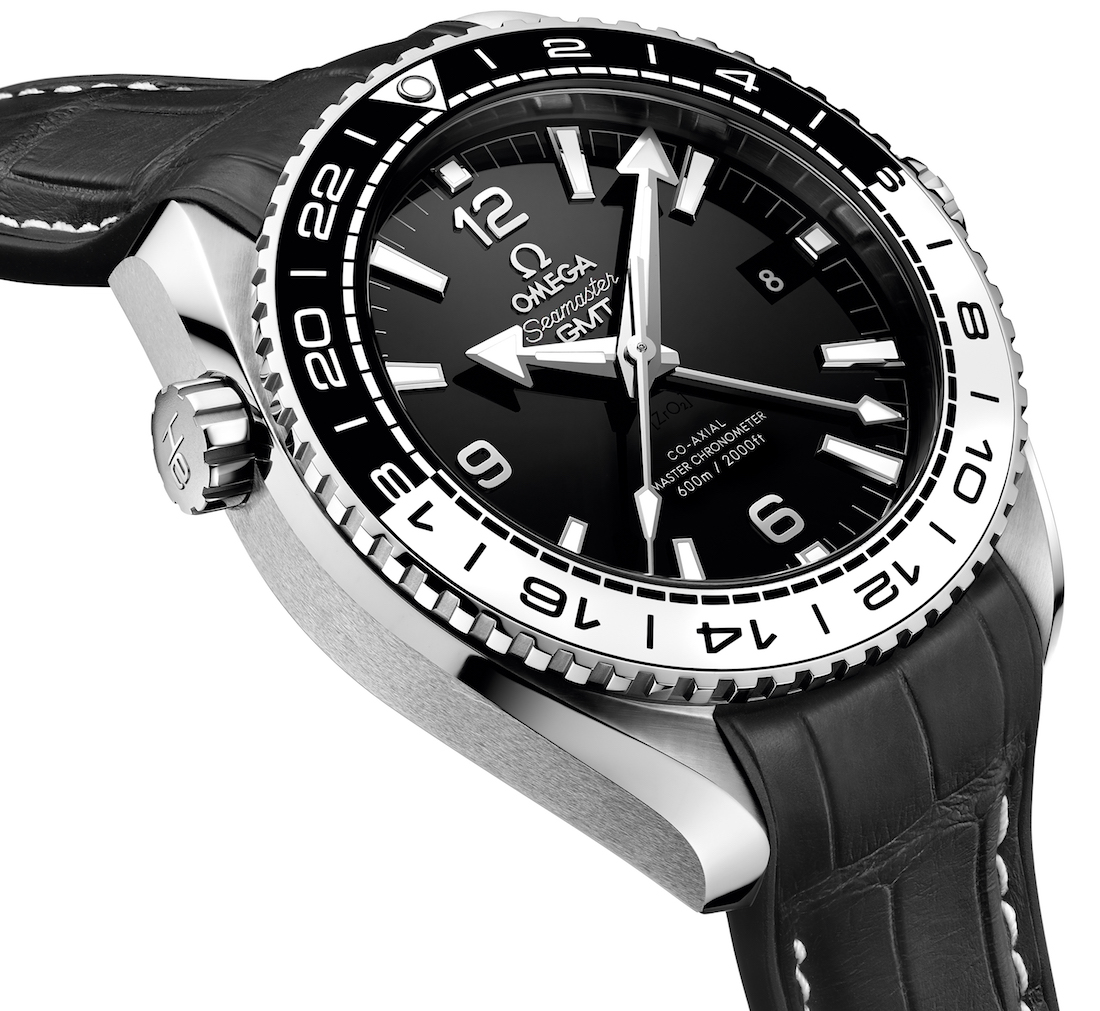
‘Cookies and Cream’ Planet Ocean GMT
Between the updated Planet Ocean watches shown at Baselworld 2016 and the introduction of the Deep Black watches a few months later in June of that year, this black-and-white-bezeled GMT is a model that may have slipped under a lot of people’s radar. Also shown at Baselworld, the 43.5mm Planet Ocean GMT is actually the only METAS certified Master Chronometer GMT watch currently available (mid-2018) from Omega, not counting the Deep Black or Big Blue which don’t have a bidirectional bezel. Omega said that this is the first watch to feature two distinct ceramic colors (whereas Rolex’s GMT is done in one color with one side treated to make it a different color), though I have a feeling that white and black are easier to achieve than some other colors.
A very unusual Planet Ocean, the color scheme here was left to white and black without even a hint of orange. I’ve personally found myself pretty temperate about this watch, though I have given it the nickname of “Cookies and Cream,” which is never a bad thing. But really, you’ve got all the updates and upgrades of the third generation Planet Ocean in a unique GMT. I have to bring up the fact that this watch and the Rolex GMT Master II in steel are natural competitors and, once again, the Planet Ocean will appeal to someone who wants a totally modern option that stands out from the crowd. It’s also going to appeal to luxury buyers who scoff at the idea of a waiting list or a used watch that costs more than retail.
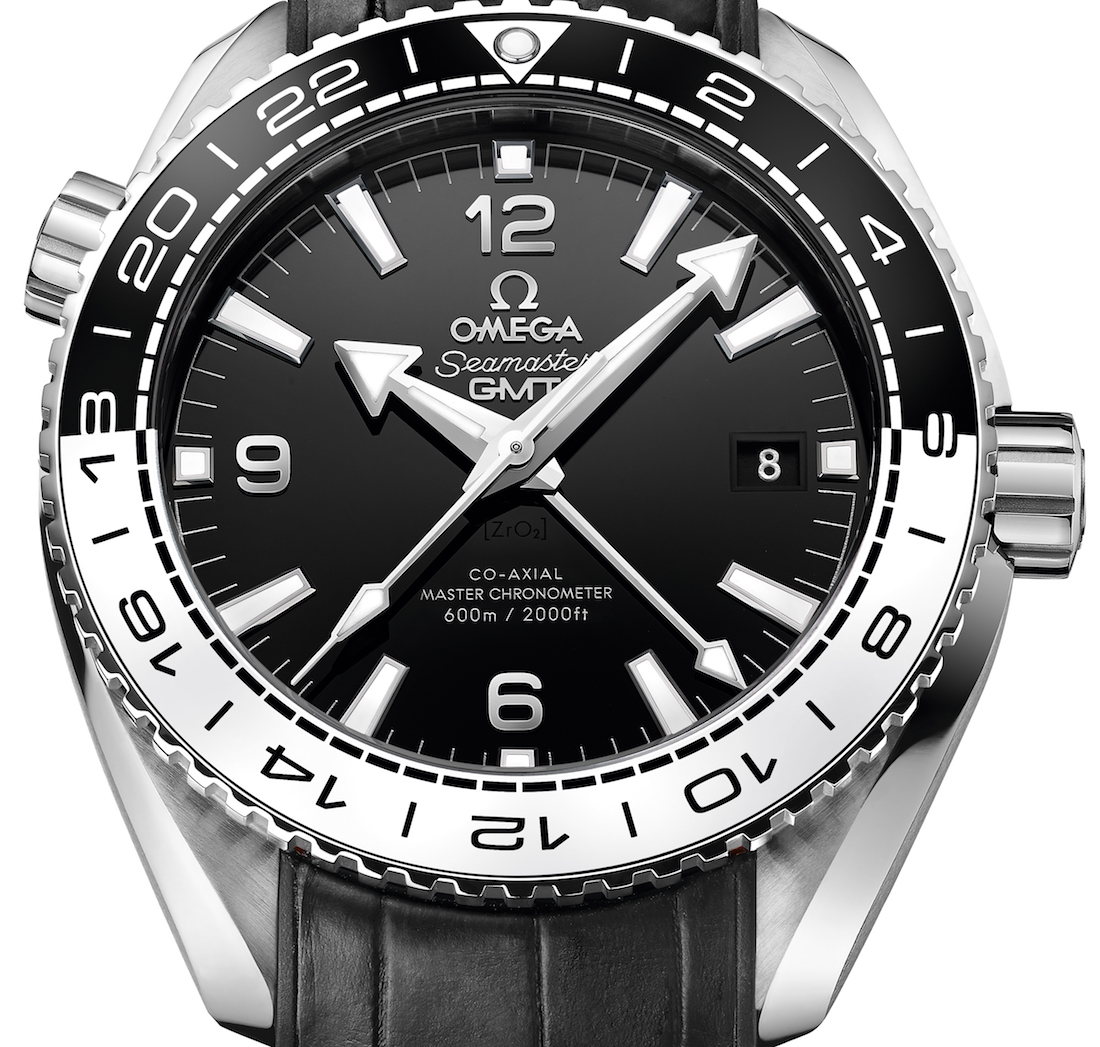
Along with the ceramic bidirectional bezel, updated bracelet, and all the minor tweaks and updates comes the caliber 8906 movement. The in-house METAS certified Co-Axial Master Chronometer movement is Omega’s latest and most refined GMT movement which shares the same silicon hairspring, anti-magnetic materials, 60-hour power reserve, and independent hour hand as the caliber 8900. Some rare good Planet Ocean news in terms of case thickness, this GMT actually shrunk a little bit down from 17.25mm thick to 17.04mm thick, which is far from slim but at least it’s an improvement.
I really, really wish Omega would produce this in the textured rubber strap with contrasting black and white (found on the all-black Deep Black) rather than black and orange. I think that would make this watch into a piece that I’d be totally smitten with because right now it’s currently only available on a bracelet for $8,000 or a leather/rubber strap for $7,900. I understand the decision to not have the textured rubber strap since the watch is more a GMT than a diver so it’s “dressed up” a little bit but I think the strap I proposed would do wonders.
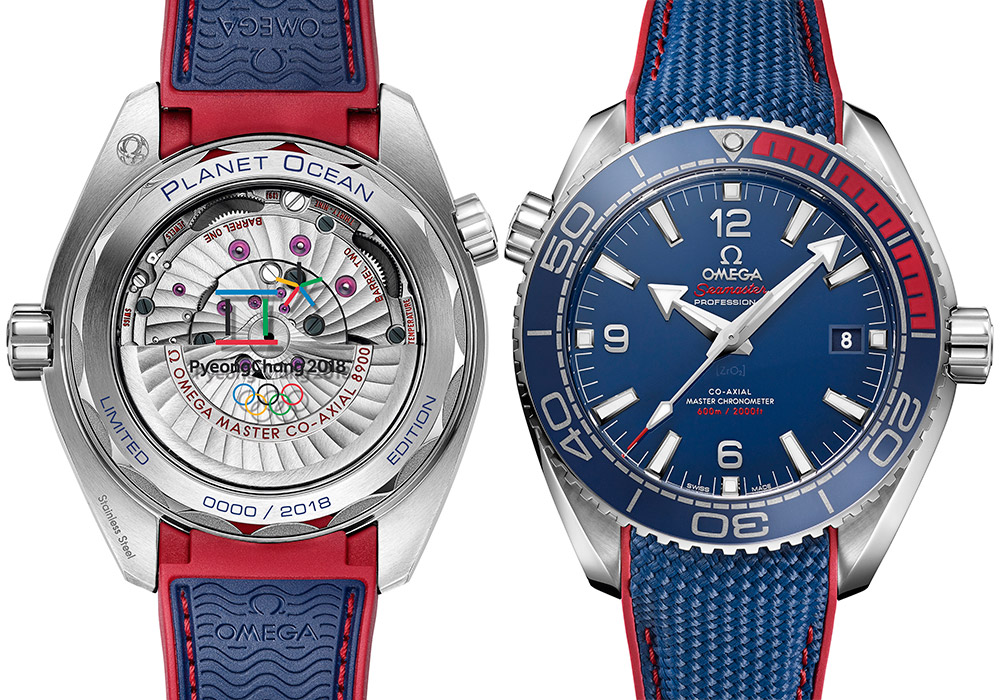
2018 PyeongChang Olympics & Michael Phelps Limited Editions
First off, I know I said I’m leaving the chronographs out of this post but I felt compelled to add the Planet Ocean Chronograph Michael Phelps Limited Edition while also discussing the limited edition three-hand Planet Ocean PyeongChang 2018 Olympics watch. Why? Two reasons: Both are trading at above their original retail price (not something one would immediately guess for either) and these are both limited edition watches that are really good looking. In fact, I’d really not mind seeing either of the designs as a permanent fixture.
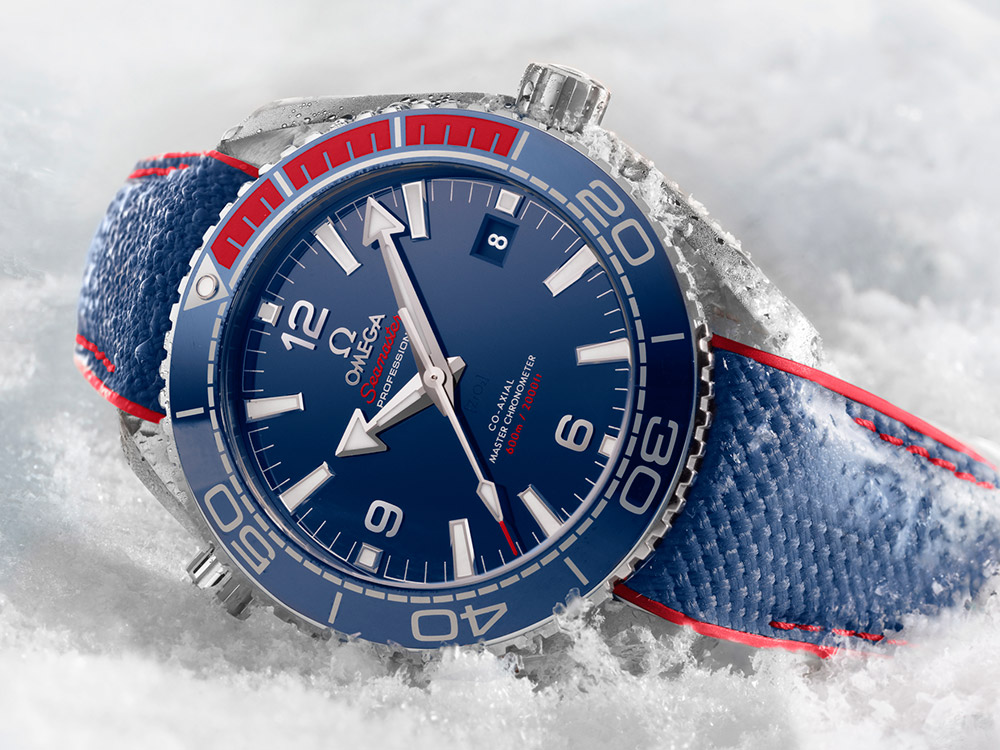
The Omega Seamaster Planet Ocean PyeongChang 2018 Olympics watch is the standard third generation three-hander but done in the South Korean flag colors of Navy blue and red, which happen to be a really good looking combination. Omega left out any branding on the dial of the watch. Only when you turn it over does the watch reveal its co-branded identity with the PyeongChang Olympics text and logo on the exhibition caseback. Honestly, this decision bugs me since this text and logo are just stamped onto the exhibition caseback, which kind of takes away the point. I’d have preferred something on the steel part of the caseback, where you’ll find what number out of the limited production of 2,018 watches it is. Obviously, these sold out with a retail price at $6,950, and right now I can find 3-4 available for around $7,400-7,900.
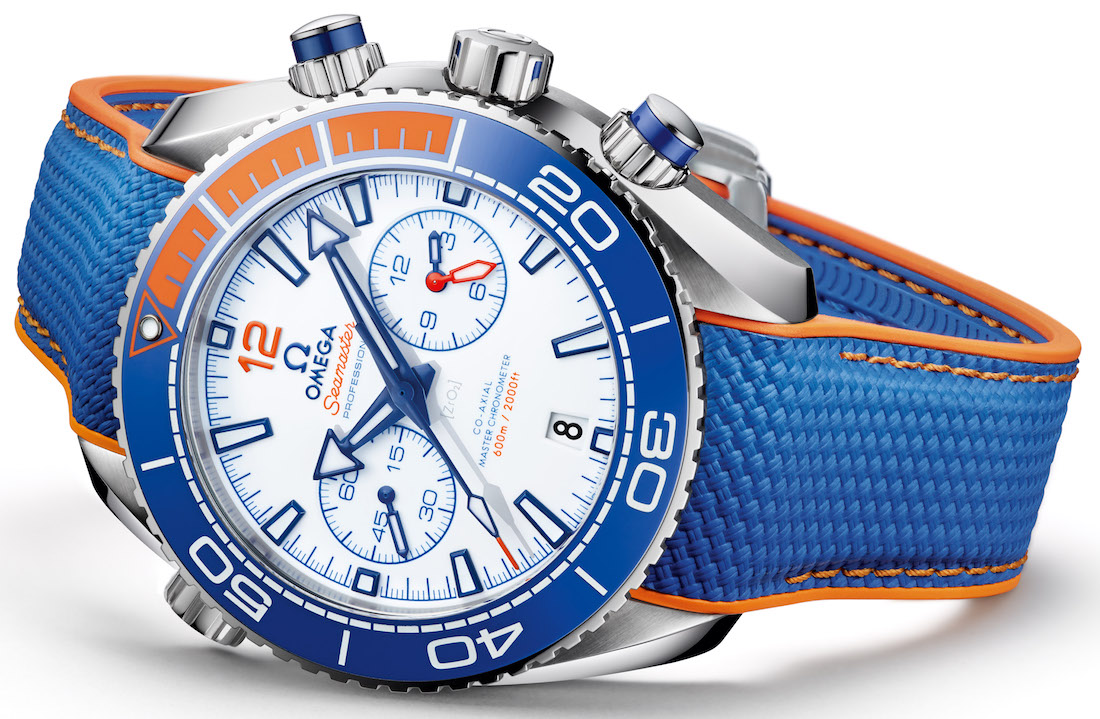
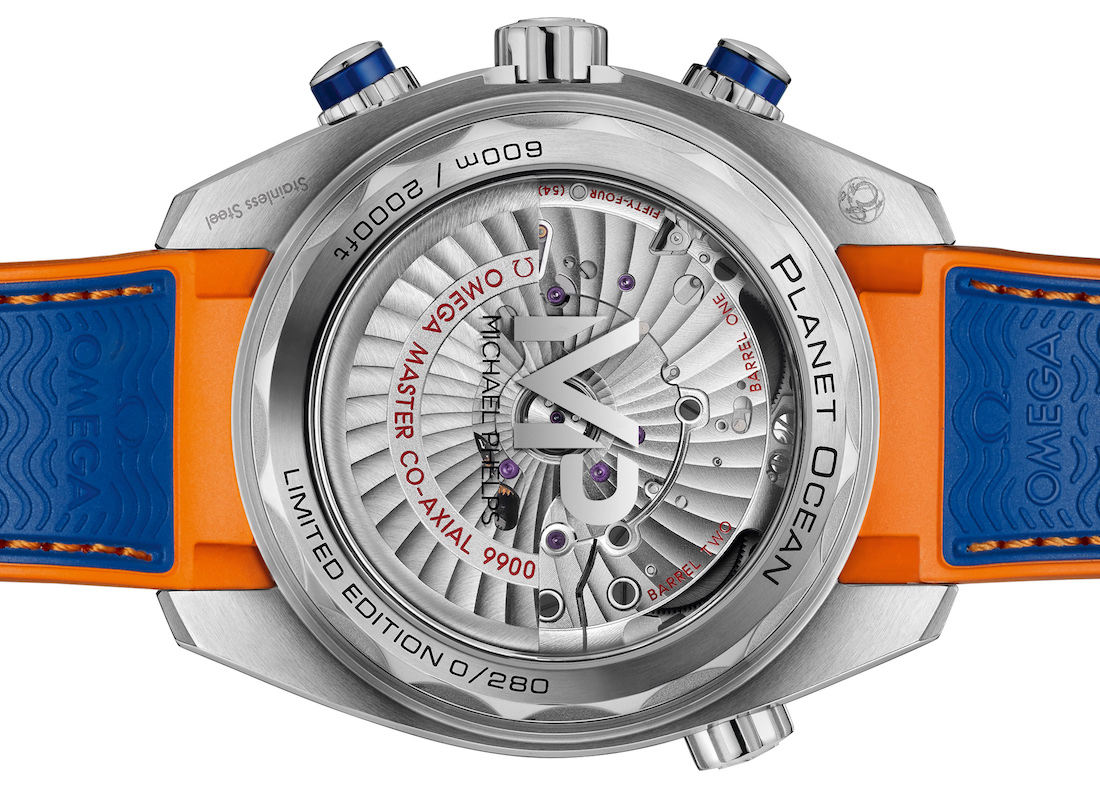
As for the Michael Phelps Chronograph that was also introduced in late 2017, it is a fun and bright orange and blue piece on a white dial that visually pops. And I mean, really pops because the chronograph is 45.5mm-wide and a massive 18.87mm-thick, with the METAS-certified caliber 9900 that’s slightly obscured from the exhibition caseback due to the Phelps branding. Super legible, colorful, and once again, just a fun watch that I can see fitting right in here in Southern California. What’s particularly of note about this watch is that it was an online exclusive, and it’s refreshing to see a brand like Omega embrace e-commerce. Omega produced 280 of these and it seems like they have some available on their site for the retail price of $8,200. Interestingly, I’m seeing about half a dozen on Chrono24 that are asking around $10,000.
Both of these watches show that minimal intrusiveness, good design, and the ability to make some bolder creative decisions makes for limited edition co-branded watches that can hold their own.
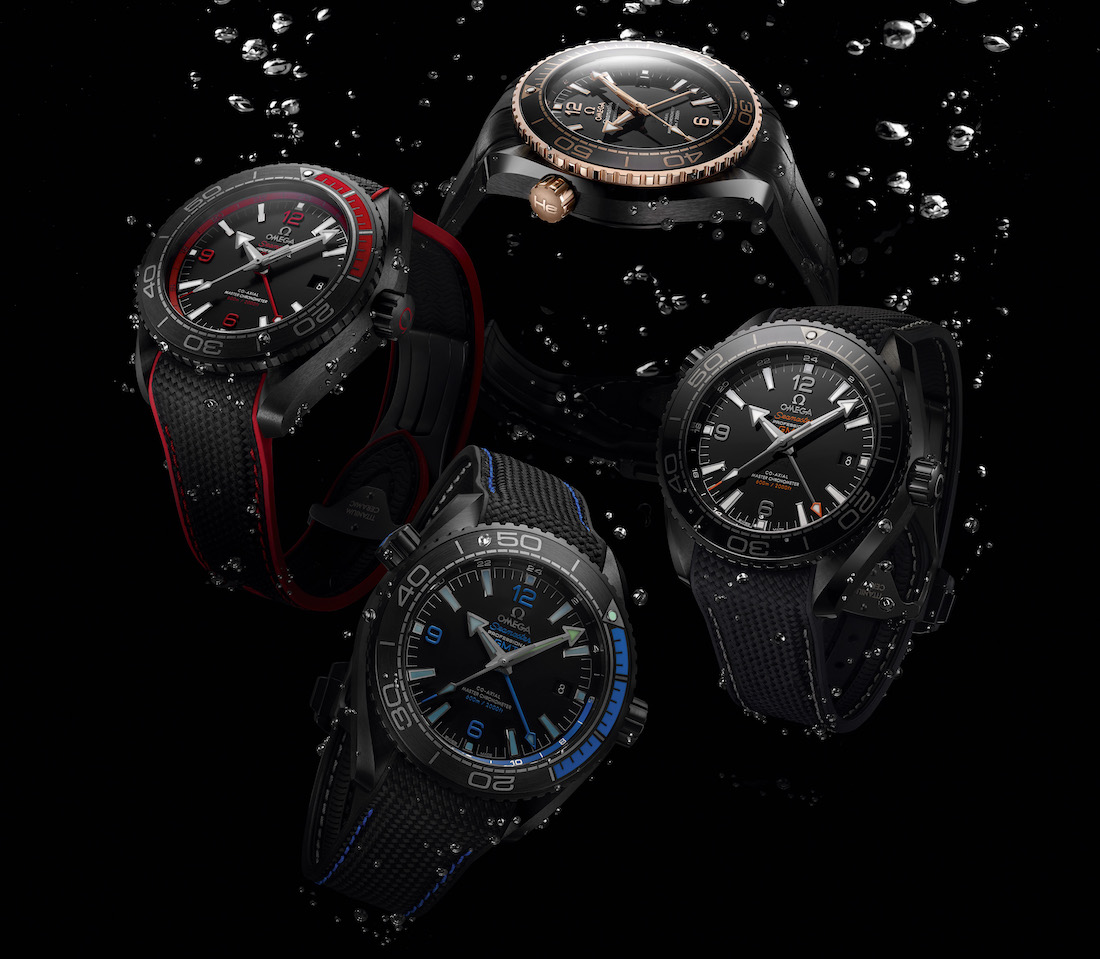
Hello Darkness, My Old Friend
You knew it was coming. Yes, after the Speedmaster Dark Side of the Moon and its various spin-off models, Omega decided that its top-tier dive watch also needed to come in a full-ceramic case without any subtlety in either size or price. The 45.5mm-wide, 17.18mm-thick Omega Seamaster Planet Ocean Deep Black watches are carved out of a single block of ceramic and when the watch was introduced in 2016, the near-$12,000 price tag gave sticker shock to immediate fans and skeptics alike. I doubt opinions on whether it’s too big or too expensive have changed in the two years since the watch was announced but if resale value is an indication, then Omega may have pulled off a success story here.
Planet Ocean watches tend to take a healthy hit when it comes to the secondhand market. This is due to a combination of factors including the fact that Omega relentlessly updates them as well as the fact there really isn’t any shortage of them. Omega likely produces close to a quarter of a million watches per year and with the ease of the secondhand market and enthusiast trading, nobody who wants a Planet Ocean of any generation should have a hard time finding one. Getting back to the Deep Black though, a quick search shows that most pre-owned models available are going for between $8,000-$10,000. That’s not a huge drop in value for a watch that retails at $11,700.
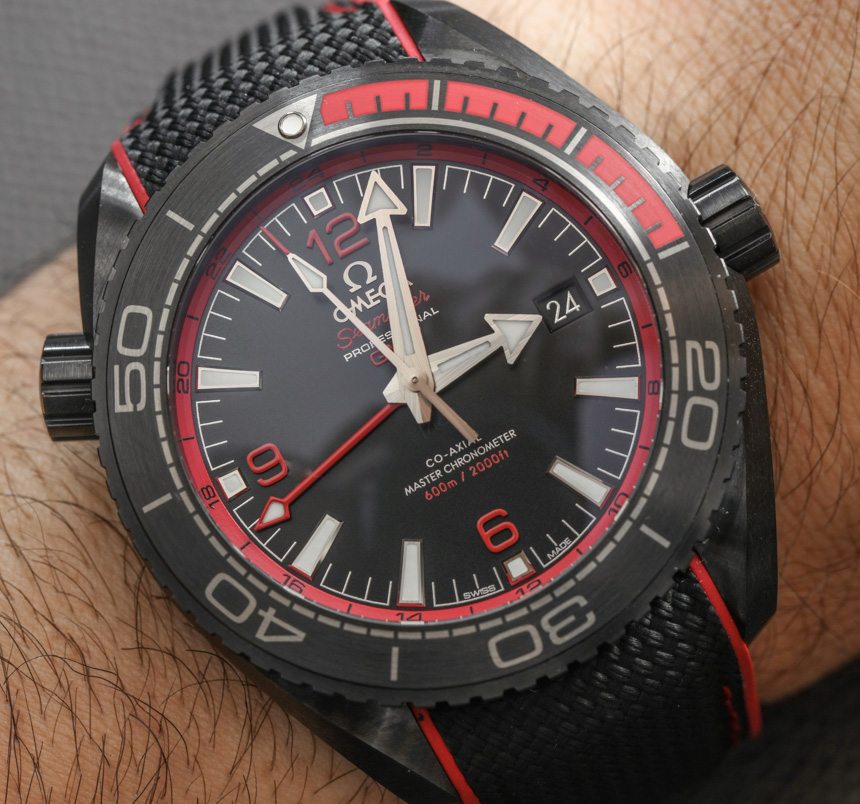
Before I continue about the Deep Black, I want to drive one point home with this watch. You have to see it and handle it to properly judge it. It’s just that kind of watch because, personally, I was very skeptical of it when it was first announced and more so when I saw the price tag. After handling it and wearing it around a bit, I was sold. If I had to boil the Deep Black watches into one word, what would it be? Badass.
Anyway, Omega introduced four Deep Black watches: one done in 18k Sedna gold on a leather strap; an all-black model; and two that have either a red or blue rubber 15-minute section on the bezel. The black and gold models are done in a glossy case and dial while the blue or red models keep it subdued with a matte finish, which is a shame since I’d like to see all of them available in a glossy finish. All of them share the GMT-ring on the dial which is a good addition considering Omega is marketing this as a Professional diver as well as a GMT watch for travelers.
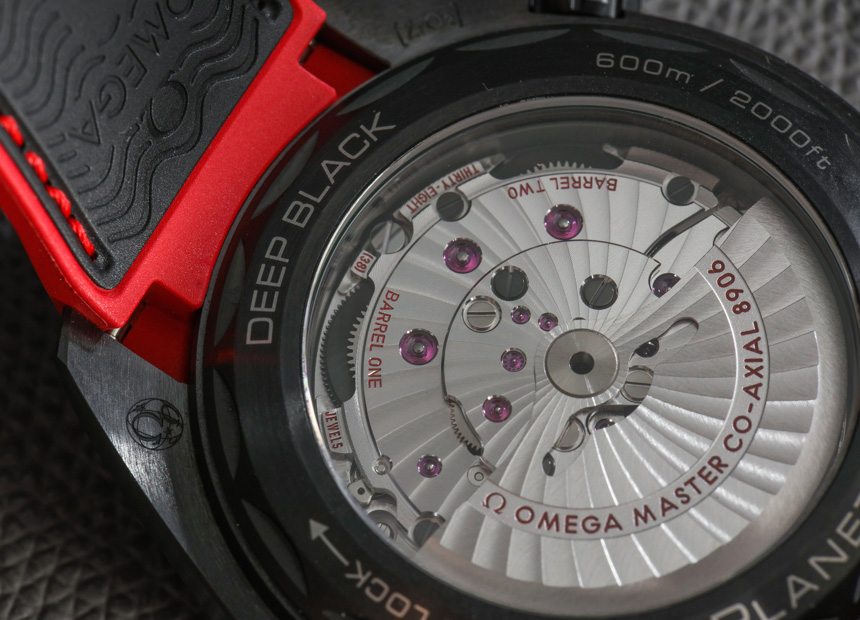
As easy as it would have been for Omega to just make a black ceramic Planet Ocean and let that be that, I think it is the attention to detail that has proven the Deep Black to be a success. Little things like the crown and Helium escape valve having matching rubber injected in blue or red for those two models, the proprietary Naiad Lock which is just Omega showing extra care in producing a screw-down ceramic caseback and a matching black ceramic deployant clasp show a cohesive design vision and thoughtful execution. If the price is worth it is up to you, but Omega didn’t give any reasons for someone on the fence to say no to the Deep Black.
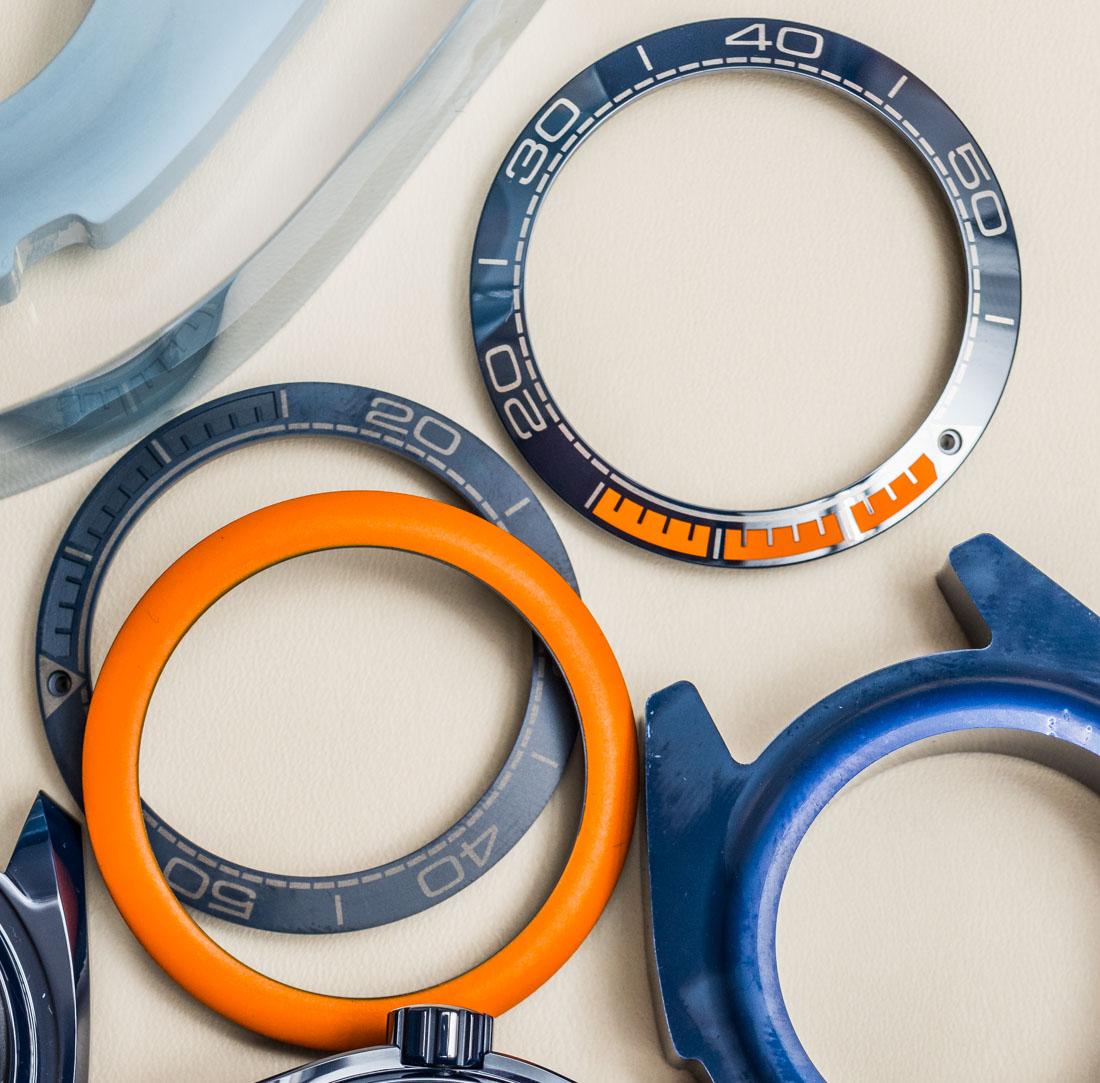
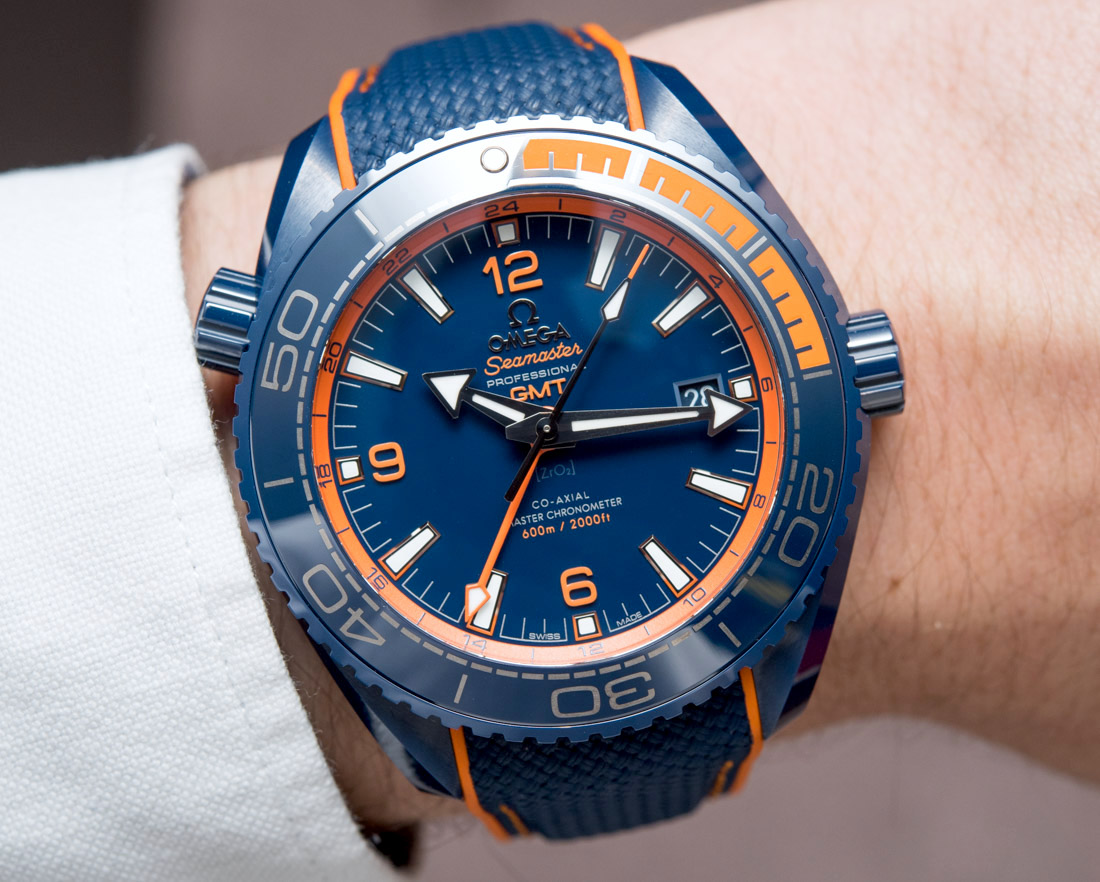
A year after the Deep Black watches, Omega introduced the Planet Ocean Big Blue which shares similar specs but it’s, well, blue. In a case made of solid ceramic, Omega has achieved a deep and rich blue color that is much more striking in person than from photos. Omega is clearly investing in developing ceramic technology and methods, and I assume that more colors (all orange?) are coming not only for the Planet Ocean GMT but other pieces as well. We went pretty deep into the Big Blue here but for all intents and purposes, I see the Big Blue as a natural sibling of the Deep Black. Price is also the same at $11,700.
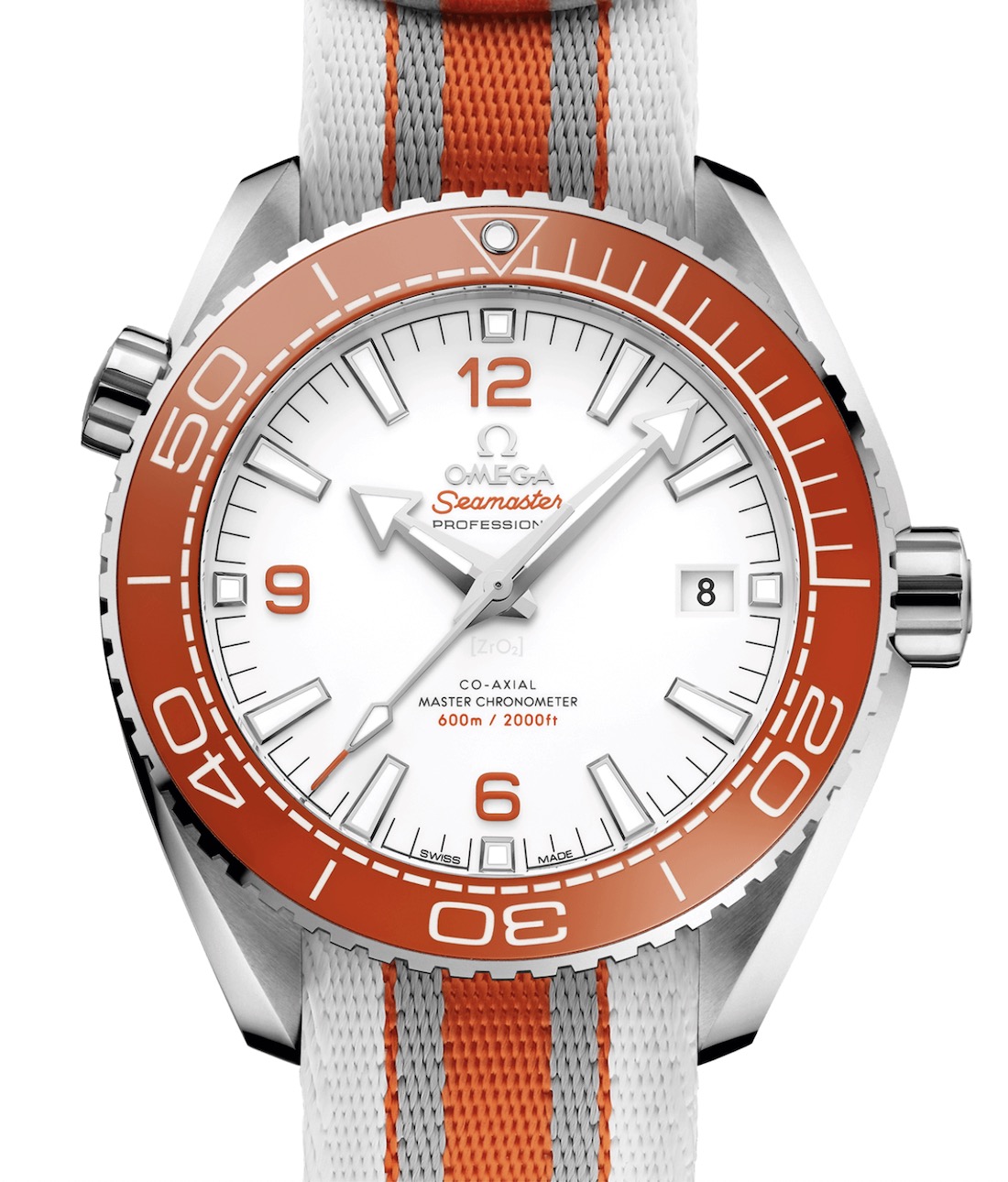
More Orange, Tokyo Olympics 2020, & the 36th America’s Cup
In 2019 Omega introduced a new variant of the Seamaster Planet Ocean, which certainly wasn’t major news but still a pretty attractive new offering with an orange ceramic bezel and white ceramic dial. Orange bezels have been around on the Planet Ocean since the first generation back in 2005 (not to get off on a tangent, but these older aluminum orange bezel Planet Oceans are some of the best deals around right now). The standard 600M water resistant 43.5 Planet Ocean case here measures at about 16.5mm thick and has a 52.5mm lug-to-lug height. Ditto, caliber 8900 movement with 60-hour power reserve.
Available on bracelet or NATO strap, these are priced right in line with their peer models at $6,200 on strap and $6,500 on bracelet.
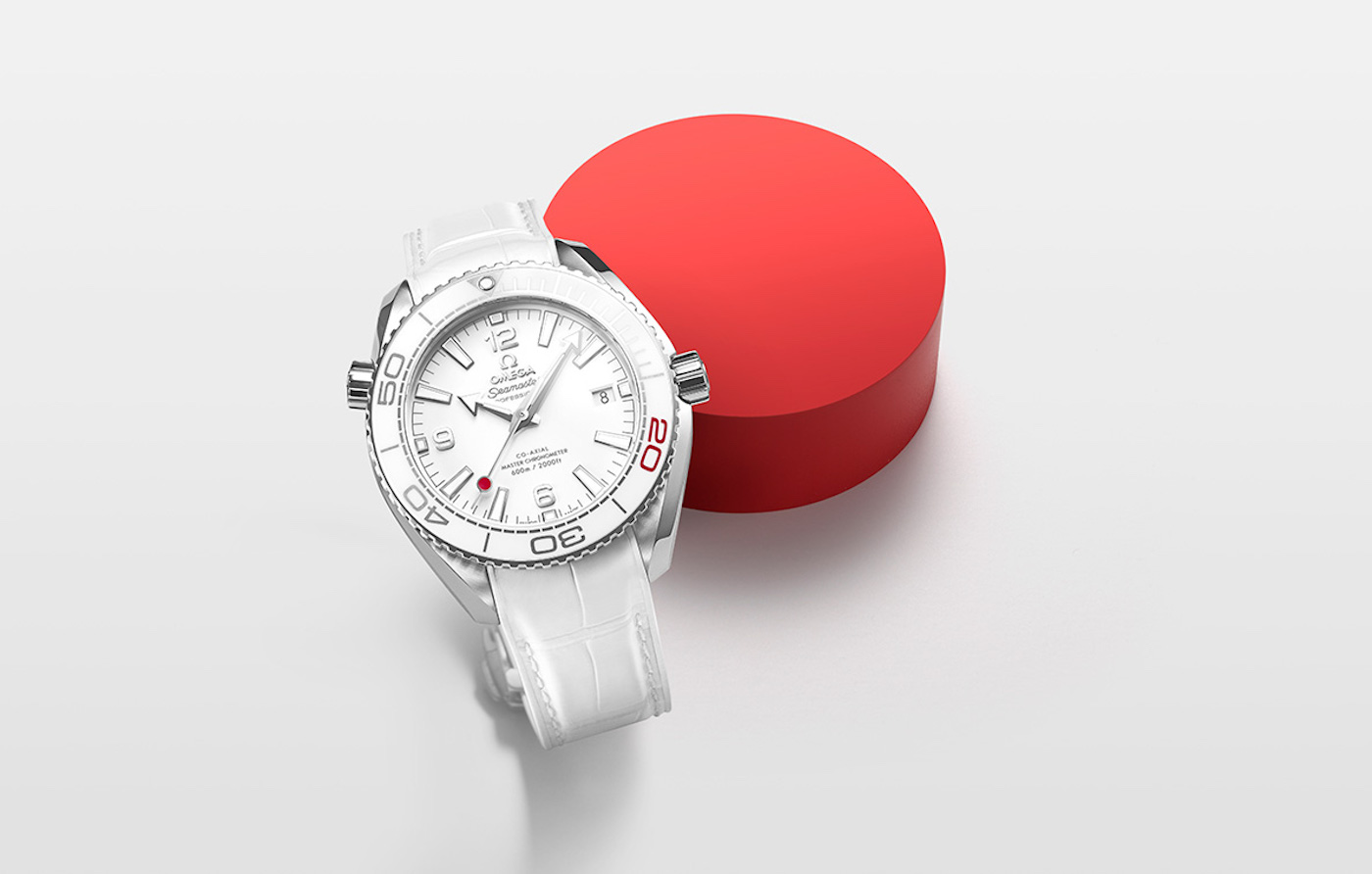
For the Tokyo Olympics, Omega presented a limited edition Planet Ocean alongside an Aqua Terra, as well. The smaller 39.5mm-case Planet Ocean is all white, with a white ceramic bezel, white ceramic dial, hands, and indices, as well as a matching white leather strap. All white of course, except for the red lollipop seconds hand which is a tribute to the Japanese flag, and the “20” on the bezel is done in a red liquid ceramic. You’ve got the Tokyo 2020 emblem embossed onto the exhibition case back that shows off the caliber 8800 METAS certified movement that has a 55-hour power reserve.
Limited to 2,020 pieces, the Seamaster Planet Ocean Tokyo 2020 limited edition on white leather strap is priced at $7,450.
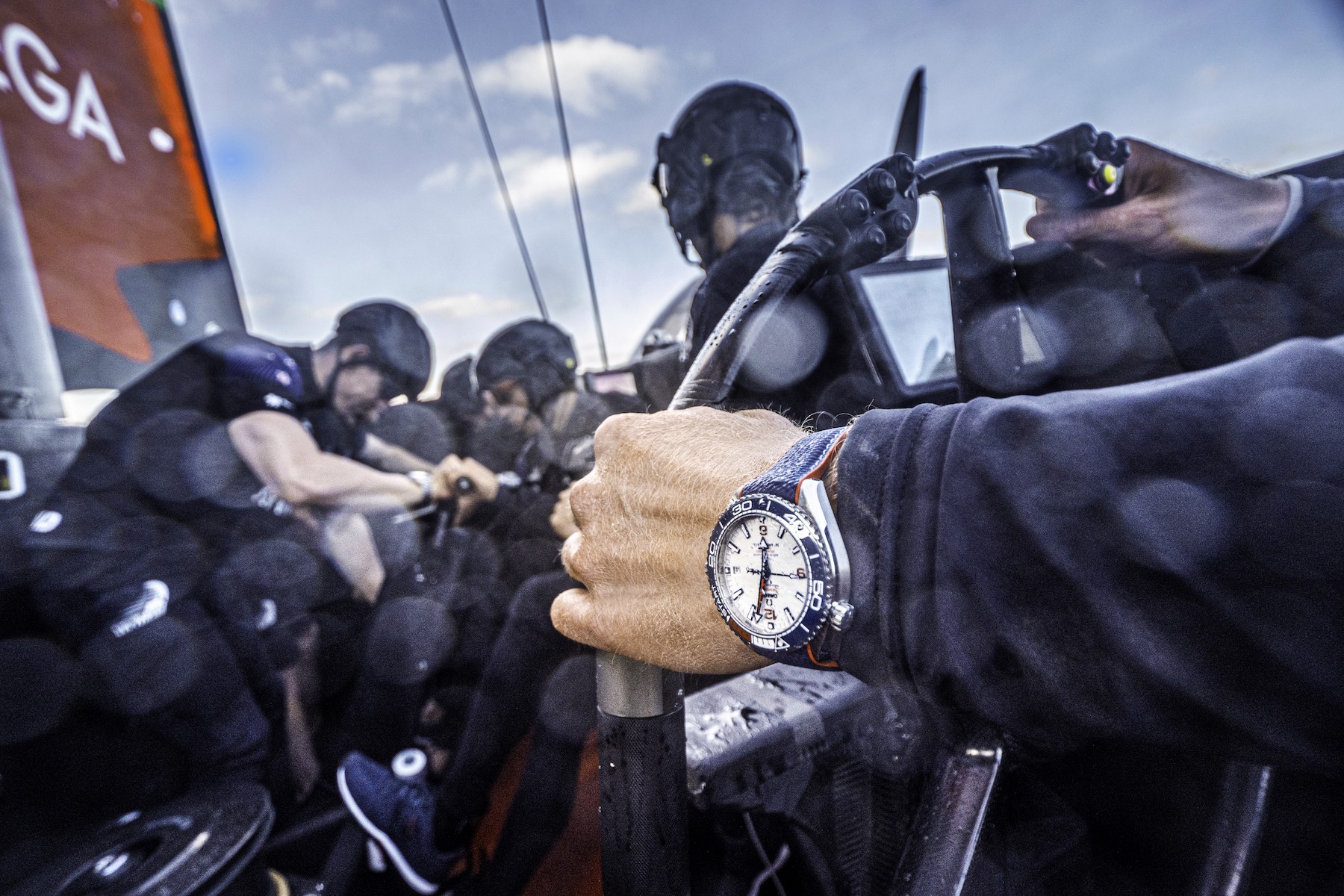
The 36th America’s Cup limited edition is one of my favorite designs for the Planet Ocean — a red, white, and blue color scheme celebrating the brand’s partnership with the famous yachting event. A take on the 43.5mm case, the 36th America’s Cup adds interesting touches like the seconds hand counterweight done in the shape of the race’s logo. Really, though, the interplay of the white dial with the blue and red touches throughout just looks so good to me.
These are limited to 2,021 pieces and priced at $7,050 but as of now, these are totally sold out.
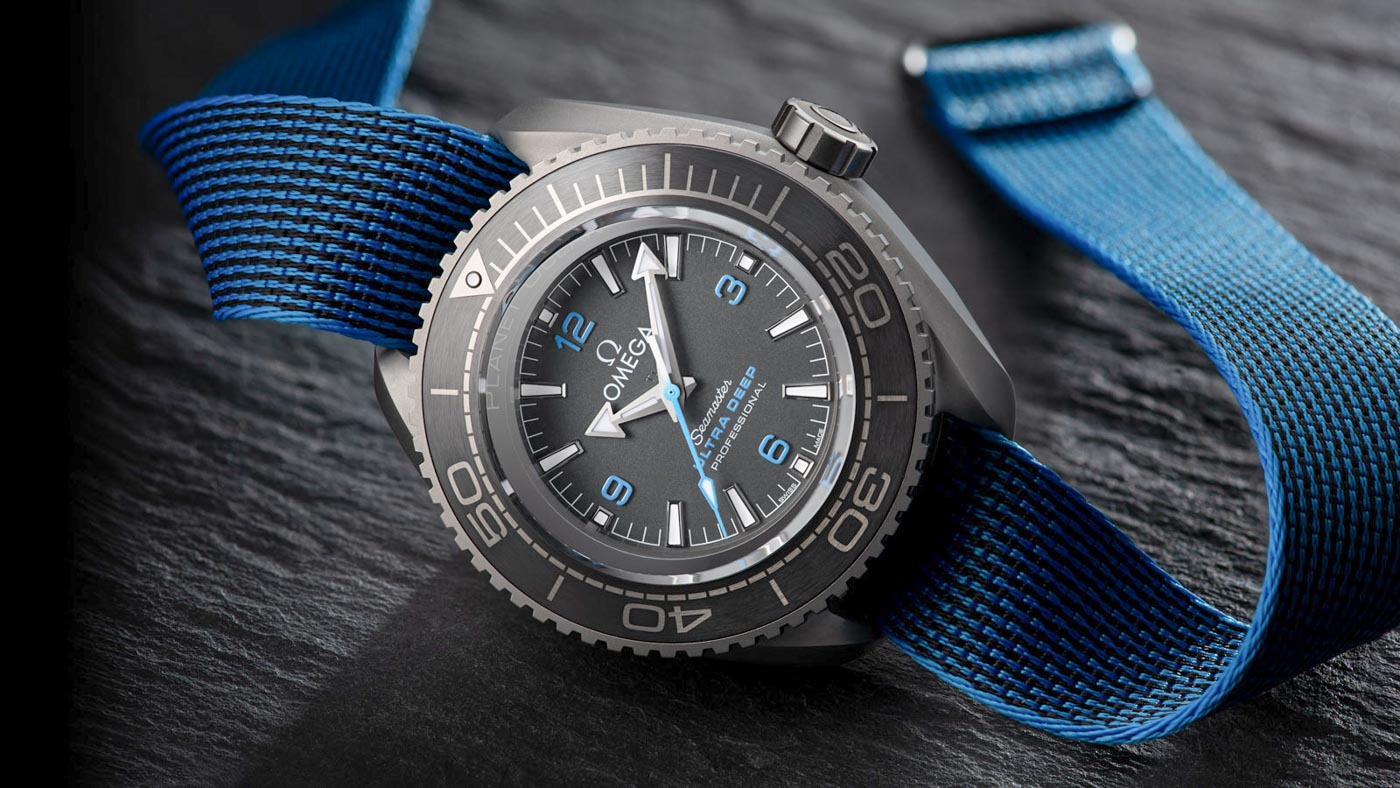
Ultra Deep & A World Record
In 2019 Victor Vescovo took his vessel down 10,928 meters (35,853 feet, or 6.79 miles) in the Pacific Ocean and broke the world record for the deepest dive. On that submarine was strapped three Omega Seamaster Planet Ocean Ultra Deep Professionals, which became the deepest diving dive watch. As our David Bredan noted regarding Rolex’s previous record:
“Rolex historians and again, diving enthusiasts, will know that the previous record of 10,916 meters below surface was set back in 1960 by Jacques Piccard and Dan Walsh, whose Bathyscaphe Trieste had a Rolex Deepsea Special strapped to its exterior. Then, in 2012, movie director James Cameron attended to best their record but ended up only reaching 10,898 meters — this time with a Rolex Deepsea Challenger being put through its paces.”
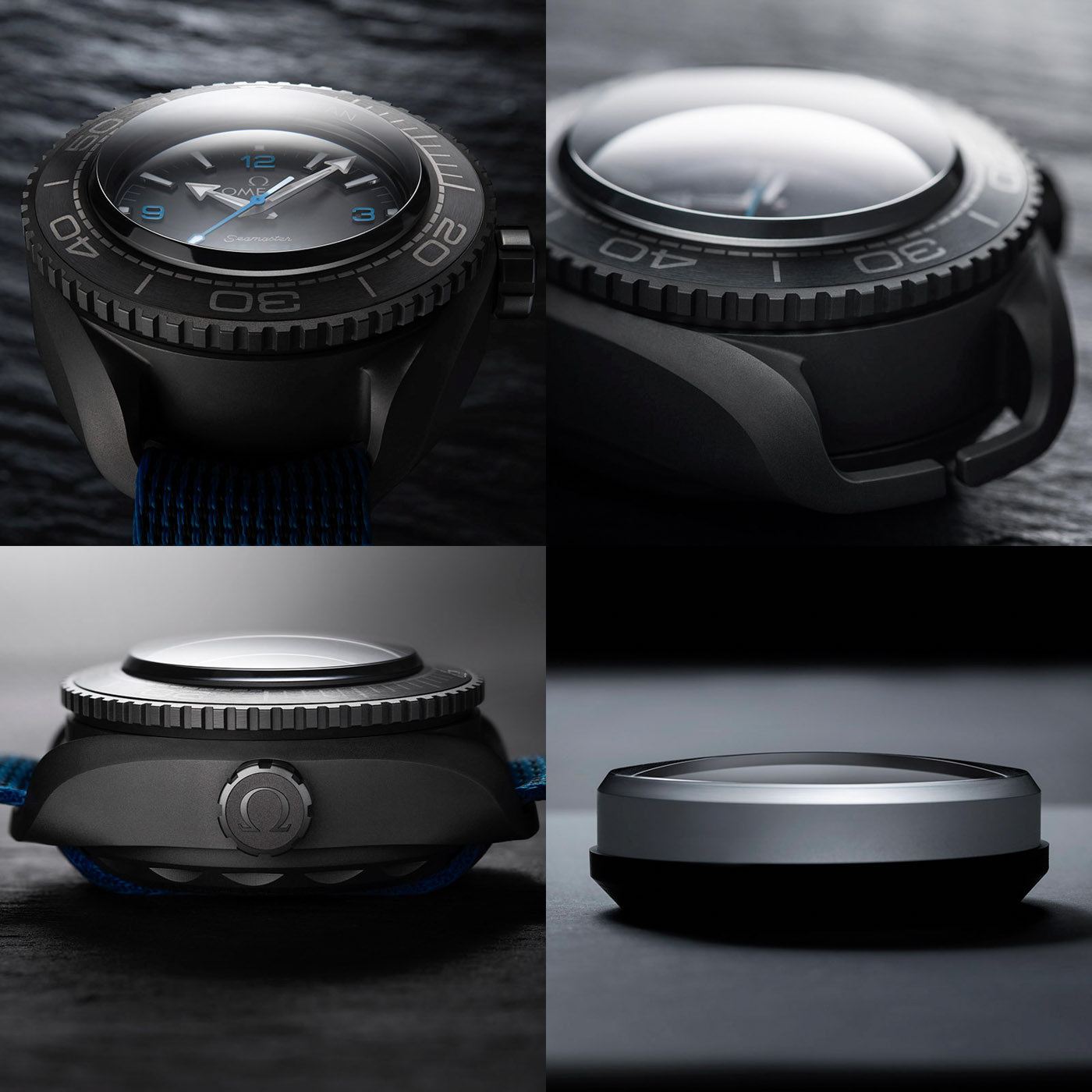
This record-breaking feat was made possible by Omega’s “Ultra Deep Technology” which involves a viewport design, manta lugs, heavy use of forged grade 5 titanium, Master Chronometer movements, and a Liquidmetal bond in the sapphire-to-casebody assembly. The stat that each square centimeter can support the 2,400 pounds is still absolutely insane to me, and a testament to Omega’s accomplishment.
There is a lot to discuss about the construction of the 55mm-wide and 28mm-thick grade 5 titanium Planet Ocean Ultra Deep Professional, and I am going to recommend you read our article about it here to get the full details. It’s only been a little over a year since the Ultra Deep broke the world record, but so far there’s been no official news from Omega regarding any application of the Ultra Deep technology in any commercial pieces (well, at least as of June 27, 2020).
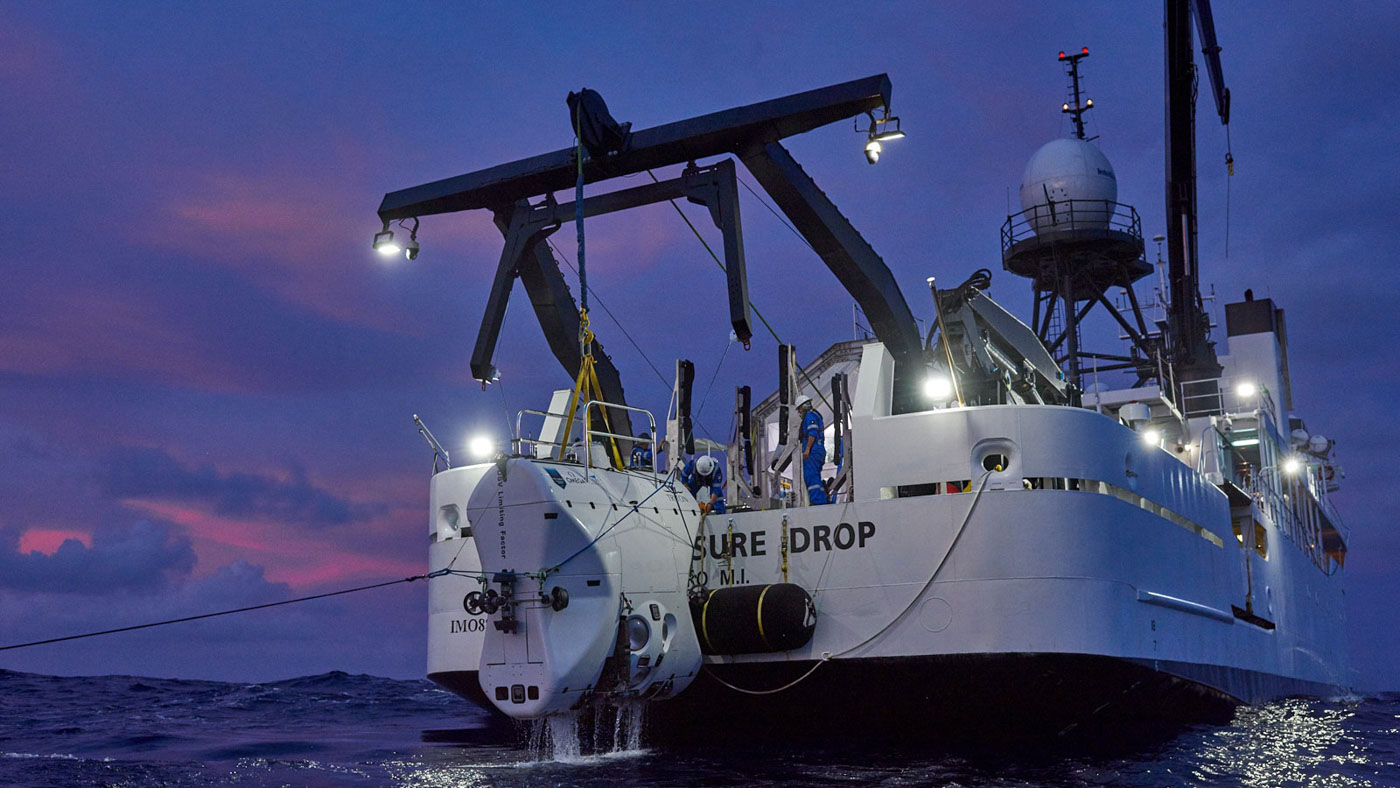
So, this has been a comprehensive look at the Omega Seamaster Planet Ocean since its inception through the date of writing in mid-2018 summer 2020. I intend to update and modify this piece as time goes on, but I’d also love to hear from fans, owners, and critics of the Planet Ocean. Since this has been one of the longer articles I’ve written, I’m now going to put on my personal Planet Ocean and enjoy the outdoors. For more information, visit omegawatches.com.

